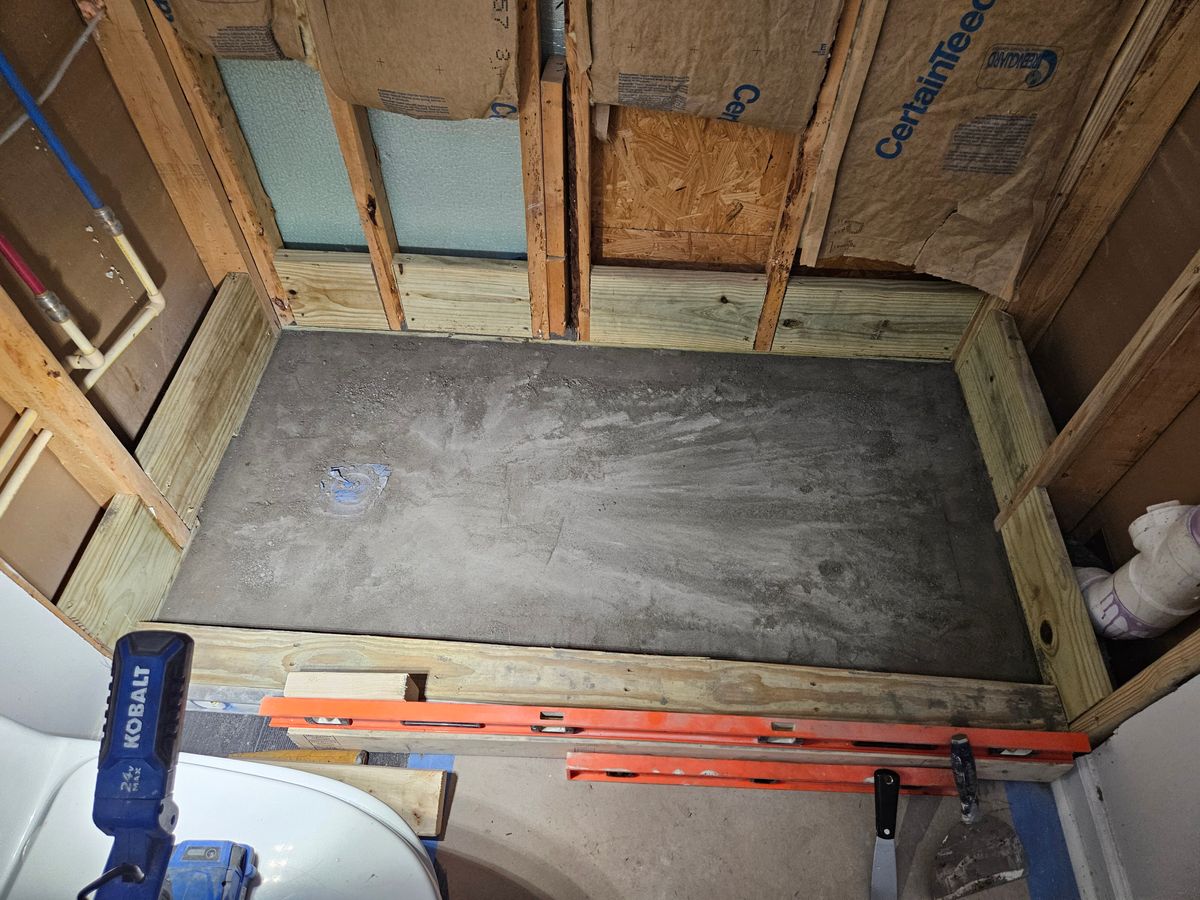🧱 Why This Question Matters
If you're building or remodeling a shower, chances are you’ve heard of both thinset and mortar beds. Some DIYers assume they’re interchangeable, but this simple mix-up can lead to major drainage issues, cracks, and costly repairs down the line.
In this post, we’ll break down the difference between thinset and mortar beds, when to use each, and why skipping the mortar bed can compromise your entire shower system.
🧪 What Is Thinset Mortar?
Thinset is a cement-based adhesive used to bond tile to surfaces like cement board, backer board, or waterproof membranes. It's mixed with water (or a latex additive) to form a smooth, spreadable paste.
✅ Best for:
-
Adhering tile to floors and walls
-
Application thickness under 1/4 inch
-
Use over cured mortar beds, concrete, or foam trays
❌ Not suitable for:
-
Building slope or supporting heavy layers
-
Filling voids or creating structural support
-
Replacing a shower mortar bed
🏗️ What Is a Shower Mortar Bed?
A mortar bed, often called a dry pack, is a thicker, sand-and-cement mix that forms the foundation of a traditional shower pan. It’s troweled and shaped to create proper slope toward the drain—usually 1/4 inch per foot.
✅ Best for:
-
Creating slope over concrete slabs
-
Supporting tile weight evenly
-
Forming custom-sized shower bases
-
Embedding waterproofing membranes
Unlike thinset, mortar beds cure solid but remain porous—perfect for directing water toward the drain under tile in traditional shower systems.
⚠️ Why Thinset Cannot Replace a Mortar Bed
Here’s the bottom line: thinset is not designed to support or slope a shower floor. Here’s why that’s a problem:
-
Too brittle: Thinset cracks when applied thick—especially over time and moisture.
-
No slope: Thinset isn’t shapeable like dry pack mortar. Your water won’t drain properly.
-
No support: It lacks the compressive strength to support tile and weight over time.
-
Risk of failure: Water pooling, cracked tiles, and failed waterproofing are all possible outcomes.
💡 If you skip the mortar bed, you're skipping the foundation of the shower system.
✅ When (and Where) Thinset Is Used in Showers
Thinset does have an important role—but only in the top layers of a shower install:
✔ To adhere tile to cement board or waterproof membranes
✔ To bond tile over a properly sloped mortar bed
✔ To bond foam pans (like Schluter KERDI trays) to concrete
Never use thinset:
-
Directly on concrete with no slope
-
To build thickness or replace a dry pack
-
In place of a pre-slope or sloped substrate
Tools needed for proper thinset use:
-
Notched trowel
-
Level
-
Spacers
-
Grout float (for finishing)
🛠️ Alternatives to Traditional Mortar Beds
If you're looking for a faster or lighter install, consider these:
1. Pre-sloped foam trays (like Schluter® KERDI-SHOWER)
-
Lightweight, waterproof, and slope-perfect
-
Great for curbless or modern showers
-
Require thinset underneath for bonding
2. Self-leveling compound (SLC)
-
Only works when used per manufacturer specs
-
Needs a primer and strict curing time
-
Not ideal for custom slope unless used by pros
3. Tileable shower bases
-
Durable fiberglass or acrylic bases
-
Fast installs, but limited in size/design flexibility
🧼 Conclusion: Build It Right from the Ground Up
Can you use thinset instead of a mortar bed in your shower?
Absolutely not.
Each has a job:
-
Thinset adheres tile
-
Mortar beds create the foundation
Skip the mortar bed, and you risk cracking tile, standing water, and waterproofing failure.
🧰 Want to do it right the first time?
👉 Download our Free Shower Mortar Bed Planning Checklist (PDF)
📞 Need pro help? Contact RCPX INC for expert shower installations in Middle Georgia.

